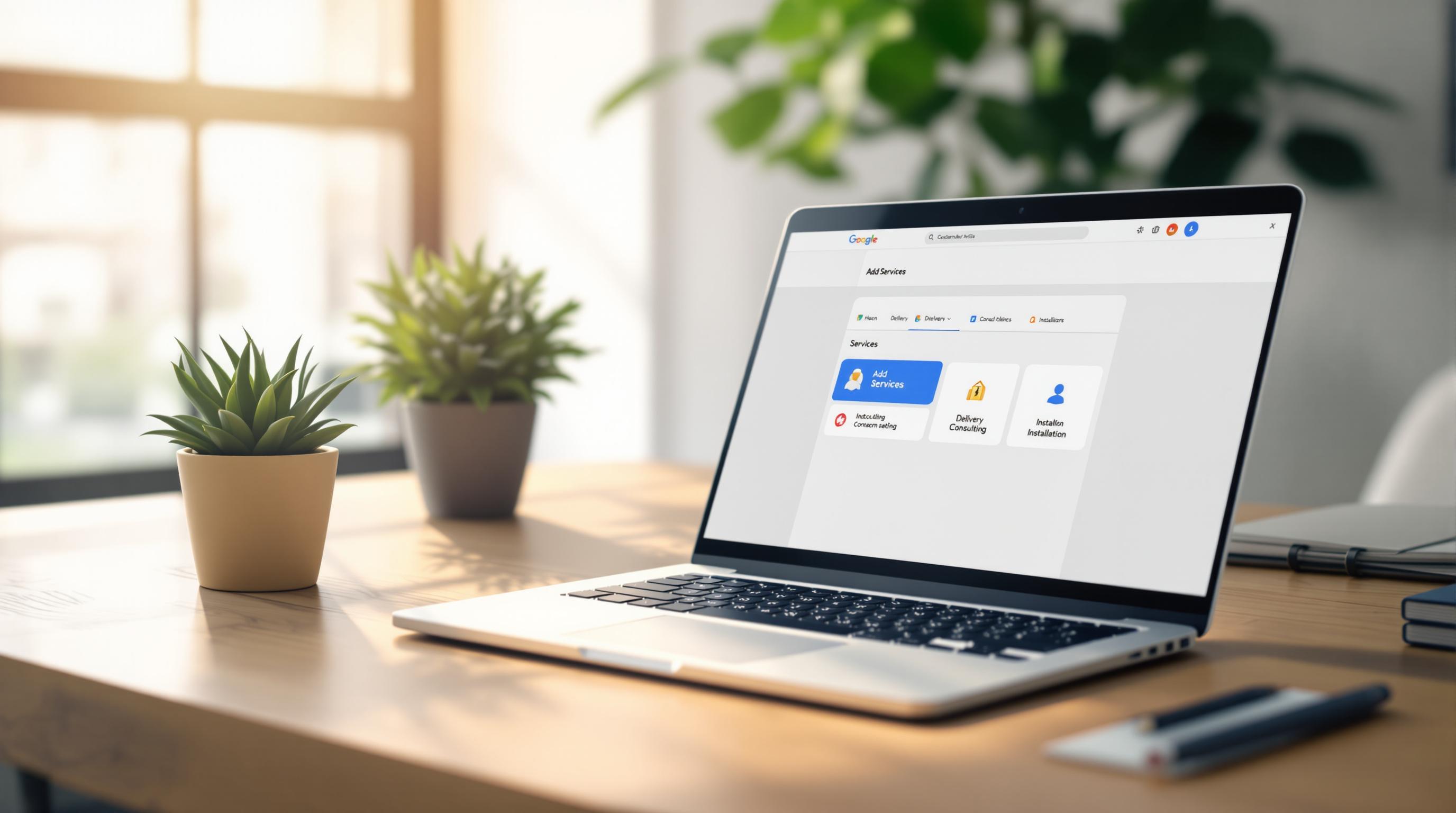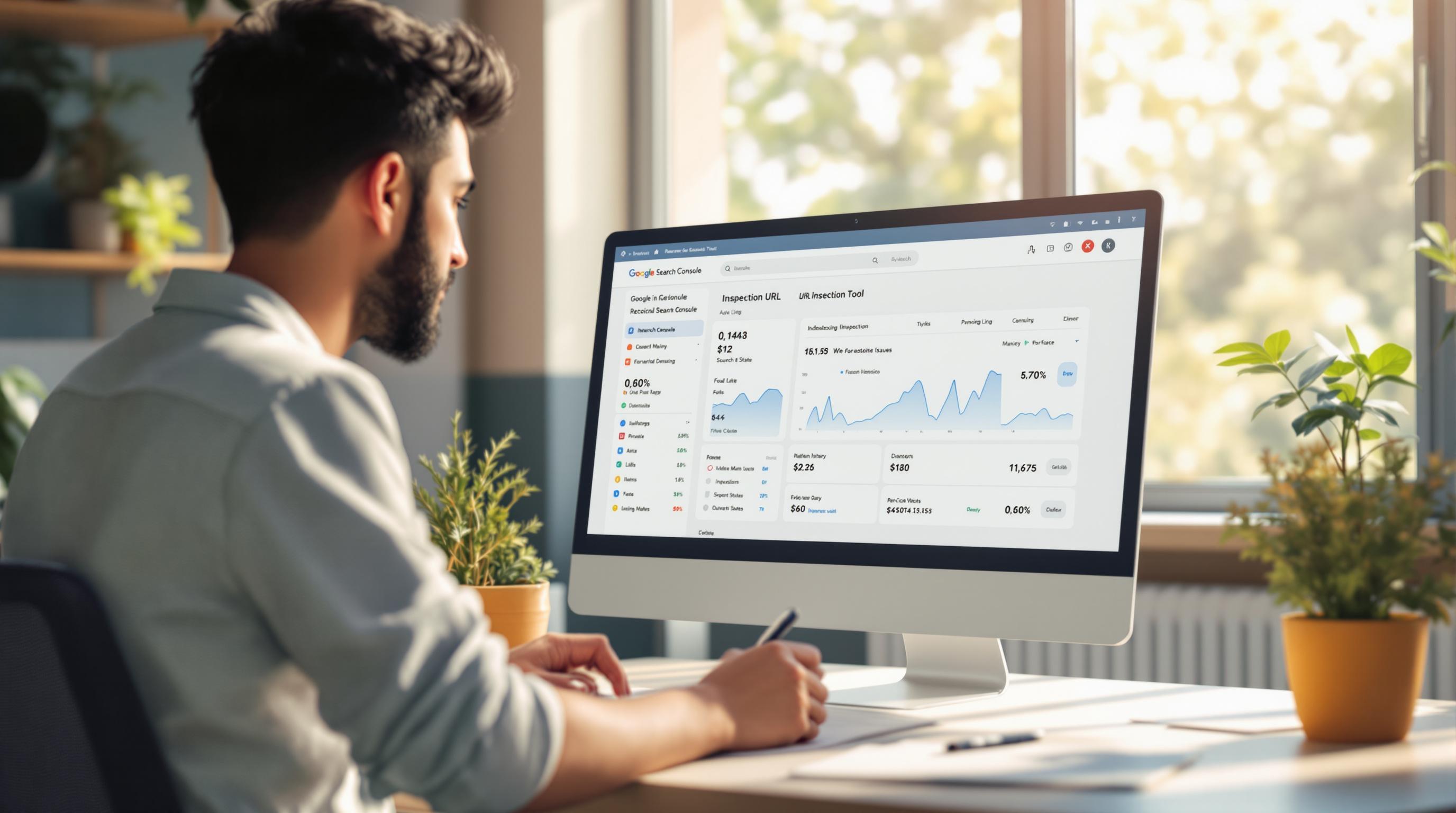Search intent is the reason behind a user's search query. Understanding it helps you create content that matches what users are looking for and improves your search rankings.
The 4 Types of Search Intent:
- Informational: Users want answers or knowledge (e.g., "how to bake bread").
- Navigational: Users are looking for a specific site or page (e.g., "Twitter login").
- Transactional: Users are ready to buy or take action (e.g., "buy iPhone 14").
- Commercial: Users are researching before a purchase (e.g., "best laptops 2025").
Why It Matters:
- Helps your content rank higher on search engines.
- Increases engagement by matching user needs.
- Drives conversions and reduces bounce rates.
In this article, we break down each type of search intent and provide actionable tips to align your content with user goals.
Informational Search Intent
What Is Informational Intent
Informational search intent refers to queries aimed at finding knowledge, answers, or explanations. For example, when someone searches for "what is content marketing" or "how to fix a leaky faucet", they are seeking information, not trying to buy something or visit a specific site.
Here are some common types of informational searches:
- How-to questions: "how to start a blog"
- Definitions: "what is artificial intelligence"
- Process explanations: "why does ice float"
- Fact-based queries: "population of New York City"
Now, let’s explore how to create content that matches these searches.
Creating Content for Information Searches
To make your content effective for informational searches, follow these tips:
Organize Your Content Clearly
- Break it into sections with clear headings and subheadings.
- For longer articles, include a table of contents to help readers navigate.
- Use visuals like images, diagrams, or videos to support your points.
Optimize for Featured Snippets
- Write the main question as an H2 or H3 heading.
- Provide a short, direct answer immediately after, followed by detailed explanations or steps.
Add Visuals to Simplify Concepts
- Use images, diagrams, infographics, or videos to make complex ideas easier to understand.
Show Depth and Credibility
- Cover related subtopics thoroughly.
- Include expert opinions, cite reliable sources, and update your content regularly to keep it accurate.
These strategies help align your content with what users are searching for while improving its visibility in search engines.
Navigational Search Intent
What Is Navigational Intent
Navigational search intent happens when users already know where they want to go and use a search engine to get there quickly. Unlike searches aimed at gathering information, these are focused on reaching a specific website, brand, or online destination.
Examples of navigational searches include:
- Searching for brand names (e.g., "BrightSide SEO")
- Looking for specific pages (e.g., "Gmail login", "Amazon Prime")
- Finding company locations (e.g., "Walmart near me")
- Accessing tools or dashboards (e.g., "Google Analytics dashboard")
These searches are direct, with users expecting the official website or relevant page to appear at the top of the results.
Navigational Search Optimization
To perform well for navigational searches, focus on these strategies:
-
Optimize Brand Presence
Ensure your brand ranks prominently by using branded URLs for key pages. -
Manage Your Google Business Profile
Keep details like business hours, location, and contact information up to date. -
Improve Site Navigation
Design a clear site structure with descriptive URLs, making it easier for users to find the pages they need.
Next, we’ll dive into how transactional search intent works and the best ways to optimize for it.
Transactional Search Intent
What Is Transactional Intent
Transactional search intent refers to searches where users are ready to take action, often involving a purchase or signing up for a service. These searches signal high potential for conversions since users have moved beyond the research phase and are prepared to act.
Typical transactional searches include:
- Product purchases ("buy iPhone 14 pro max", "order pizza delivery")
- Service sign-ups ("sign up Netflix premium", "start Spotify premium trial")
- Booking needs ("reserve hotel room NYC", "book flight tickets")
- Action-oriented tasks ("hire SEO consultant", "schedule dentist appointment")
These queries often feature action-driven words like "buy", "order", "subscribe", or "book", paired with a product or service name. Use this knowledge to design your pages with conversion in mind.
Transactional Search Optimization
Here’s how to attract and convert high-intent traffic:
Clear Call-to-Action (CTA)
- Place CTAs in prominent, visible spots, even while scrolling.
- Use button colors that stand out.
- Write button text that's direct and action-focused.
Simplify the Purchase Process
- Reduce the number of form fields.
- Offer guest checkout options.
- Highlight trust signals like secure payment icons.
- Provide multiple payment methods.
Optimize Product Pages
- Include clear descriptions and high-quality visuals.
- Display pricing upfront.
- Show inventory availability.
- Add customer reviews for credibility.
For service providers, flexibility is key. For instance, BrightSide SEO offers a quick-start option with their 1-Hour SEO Work Camp for $149 per session, as well as a more in-depth Starter Plan priced at $799 per month.
Technical Improvements
- Add schema markup to enhance search visibility.
- Focus on page speed for better user experience.
- Make sure your site works well on mobile devices.
- Set up conversion tracking to measure success.
- Create landing pages tailored to specific search terms.
sbb-itb-d7fe25c
Commercial Search Intent
What Is Commercial Intent
Commercial search intent refers to queries from people who are researching products or services but aren’t quite ready to make a purchase. These searches often involve comparing options, reading reviews, and evaluating features to make a well-informed decision.
Examples of common commercial intent searches include:
- Product comparisons: "MacBook Air vs MacBook Pro 2025"
- Review-based queries: "best project management software 2025"
- Feature evaluations: "iPhone 15 Pro Max camera quality"
- Price-focused research: "top gaming laptops under $2,000"
- Brand research: "most reliable car brands 2025"
Unlike transactional intent, where users are ready to buy, commercial intent reflects the consideration phase of the buying process. Here, users are gathering information to weigh their options.
Commercial Search Content
Content targeting commercial intent should educate users and guide them toward making a decision. Here’s how to create effective content:
Comparison Tables
Simplify product comparisons using easy-to-read tables:
| Feature | Basic Plan | Pro Plan | Enterprise Plan |
|---|---|---|---|
| Monthly Price | $799 | $1,499 | Custom |
| Keywords Tracked | 500 | 1,500 | 5,000+ |
| Reporting Frequency | Monthly | Weekly | Daily |
| Technical Audits | Quarterly | Monthly | Weekly |
| Custom Dashboard | No | Yes | Yes |
Detailed Reviews
Structure your reviews to include:
- Product specifications
- Real-world performance data
- Pricing breakdowns
- Pros and cons
- User testimonials
- Insights from experts
Feature Analysis
Break down product or service features into clear sections that cover:
- Core functionalities
- How they’re used
- Setup or implementation needs
- Return on investment (ROI)
- Integration options
For instance, when discussing SEO services, you could highlight how schema optimization improves visibility for rich snippets. BrightSide SEO’s schema service, for example, is designed to enhance snippet performance when applied correctly.
Interactive Decision Tools
Incorporate tools like ROI calculators, comparison charts, decision trees, buyer’s guides, or benchmarks to help users evaluate their options.
Regular updates are crucial for commercial content. Pricing details should be reviewed every quarter, and feature comparisons should reflect any major market changes.
Technical Optimization Tips
- Write meta descriptions with commercial intent keywords
- Use clear headings that align with search queries
- Include high-quality images with descriptive alt text
- Add internal links to related transactional pages
The 4 Key Types of Search Intent: Informational, Navigational ...
Search Intent and SEO Planning
Use intent insights to shape your content strategy and improve your SEO performance.
Matching Content to Intent
Aligning your content with search intent can increase both rankings and user engagement. Here’s how to tailor your content based on intent:
Informational Intent
- Guides
- Tutorials
- Definitions
- Educational resources
Navigational Intent
- Brand pages
- Product category pages
- Location-specific pages
Transactional Intent
- Product pages
- Service offerings
- Pricing details
Commercial Intent
- Product comparisons
- Reviews
- Feature breakdowns
- Case studies
BrightSide SEO leverages structured data to connect content with search intent effectively. Now, let’s look at tools that can help you interpret this intent.
Search Intent Analysis Tools
| Tool Type | Primary Use | Key Metrics |
|---|---|---|
| Google Search Console | Intent patterns | Click-through rates, impressions |
| Analytics Platform | User behavior | Time on page, bounce rate |
| Keyword Research | Query analysis | Search volume, competition |
| SERP Analysis | Content format | Featured snippets, rich results |
Intent-Based Conversion Tips
After identifying search intent, focus on conversion strategies that align with each stage of the user journey.
Align CTAs with Intent Stage
- Informational: Use phrases like "Learn More" or "Download Guide."
- Commercial: Encourage actions with "Compare Plans" or "See Features."
- Transactional: Push direct actions like "Buy Now" or "Start Free Trial."
Optimize Page Structure
Design your pages to guide users naturally from learning to taking action. For example, BrightSide SEO organizes service pages to educate first, then drive conversions.
Match Visual Elements to Intent
- Informational: Use infographics to simplify complex topics.
- Commercial: Add comparison charts to highlight differences.
- Transactional: Include product demos to showcase value.
Conclusion
Key Takeaways
Grasping search intent is crucial for a successful SEO strategy. Each intent type plays a specific role:
- Informational Intent connects users with answers and educational resources, potentially driving website traffic by over 50%.
- Navigational Intent keeps your brand visible to users searching for specific destinations.
- Transactional Intent focuses on users ready to make a purchase, helping e-commerce businesses boost sales by up to 30%.
- Commercial Intent supports decision-making with detailed comparisons and product reviews.
These insights provide a solid foundation for targeted SEO efforts.
Next Steps
BrightSide SEO offers SEO Work Camp sessions starting at $149 to help you align your content with user intent. Services include:
- Researching keywords that match user intent
- Creating content tailored to search purposes
- Optimizing technical aspects for better visibility
Here’s what one client had to say about our work:
"I have nothing but great things to say about Jeremy. He is an ambitious, creative self-manager who delivers real value for business and those he works with. His unique skills and insights for SEO and SEM provided a great value in helping grow our brand awareness and sales conversions within the highly competitive consumer product gaming market."
– Greg VandeVisser, Chief Marketing Officer


